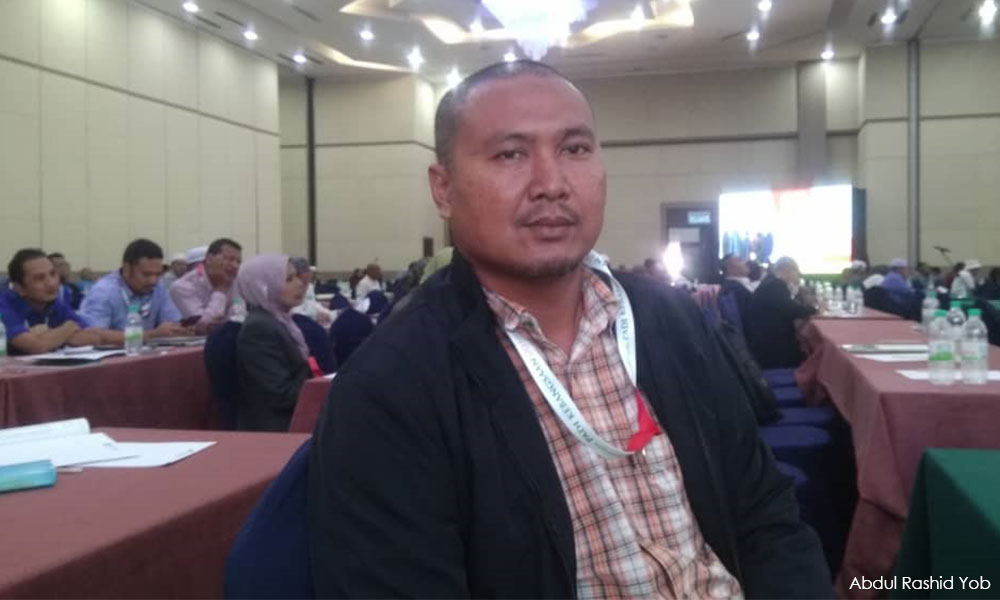Being a rice farmer is not easy especially with paddy being such a risky crop.
With challenges such as extreme weather, harvesting schedules often run wild, said Kedah farmer Abdul Rashid Yob to Malaysiakini.
“Our harvesting schedule is all over the place now. We can say that it’s off our targets.
“This means that when we used to harvest in December and January, we now harvest in March,” said the Pertubuhan Persaudaraan Pesawah Malaysia (Pesawah) executive council member.
This causes the average yield of farmers to be halved - about three to four metric tonnes per hectare, from the target of seven to eight tonnes.
It’s been the fourth season that this has happened, he said.

Malaysia is grappling with strengthening its food security, in hopes of achieving self-sufficiency.
As of 2022, its rice self-sufficiency is at 62.6 percent.
However, rice farmers end up receiving very little money because their income is tied to their yield.
Rashid explained that anything less than seven tonnes per hectare leads to losses for the farmer because of increasing costs.
This becomes direr when one considers that farmers often face financial losses of up to 60 to 70 percent, he lamented.
Farmers are poor, old
Alongside the stagnant ceiling price of rice, these issues have caused significant pressures to farmers and the industry of rice farming.
“Because farmers now, on average, the majority are not even B40 but lower than that or even part of the hardcore poor,” he said.
A farmer with 2ha of farmland will only gain around RM400 to RM600 of profit upon harvest, he added.
The B40 category consists of Malaysian households in the bottom 40 percent of earners with less than RM4,850 monthly income.
“We are worried because when the income of farmers decrease and costs keep going up, we fear that farmers can’t look for funding to continue paddy farming,” he said.
Paddy is a very risky crop as it is easily affected by diseases, weather changes, and flooding, he explained.
Despite farmers getting many incentives from the government, Rashid thinks the authorities can do more to help, such as by establishing a task force.
“One of the things the government can do is think about how to attract the interest of the youth,” he said.
The 45-year-old noted that farmers like himself are getting on in age and few are below 50 years old.
He expressed worries that Malaysia will be forced to depend even more on imports once the older farmers pass away and there is no one to replace them.
The difficulties related to paddy farming have dissuaded Malaysian youths from pursuing careers in it, he added.
Rashid inherited his farm from his parents, who were also farmers.
He left behind a career as a technician in Penang back in 2005 when his father fell ill to take over the family farm.
He has no regrets despite getting paid less now as this work is personally fulfilling.
But his life might have been different if another sibling took over instead of him, he said.
On the losing end
If one were to survey all farmers in the country, one would find almost all of them belong in the B40 category, said Malay Consultative Council food security head Syed Zikri Shahabudin.
“Farmers have been on the losing end since independence,” the NGO leader told Malaysiakini.
If farmers are not taken care of, he warned Malaysia will see more of them just working the fields part-time.
As most farmers are around 60 years old, he said an option for them to continue making an income is to lease their land to other farmers or rice millers.
A 2010 study on farmers in West Selangor showed the largest age group was those between 40 to 44 years of age (18.2 percent), followed by those between 50 to 54 (15.7 percent), 45 to 49 (14.6 percent), and 55 to 59 (13.6 percent).
Only 1.5 percent were aged between 25 to 29.
Earlier this year, Plantation and Commodities Minister Johari Abdul Ghani said branding palm oil harvesters as “specialised harvesters” can attract the interest of local youth.
In his speech to the Dewan Rakyat, he said the move would alleviate the industry’s labour shortage issue.
Something similar has yet to be done for the rice industry.
Solutions
Syed Zikri predicted a trend in which rice millers have to plant themselves or hire others to do it.
“Slowly, the trend is going towards rice millers and big businesses going in and planting paddy,” he said.
He revealed that, currently, most of those who work in large-scale farms only do so part-time.
They work full-time elsewhere as factory workers and security guards, he added.
Syed Zikri proposed looking towards Indonesia for a solution. There, they have rice varieties that have shorter harvest times and can be planted three times a year, he said.
The usual practice in Malaysia is two plantings a year.
The government can also consider increasing the ceiling price of rice, something which has not been changed in 18 years, he added. - Mkini




No comments:
Post a Comment
Note: Only a member of this blog may post a comment.